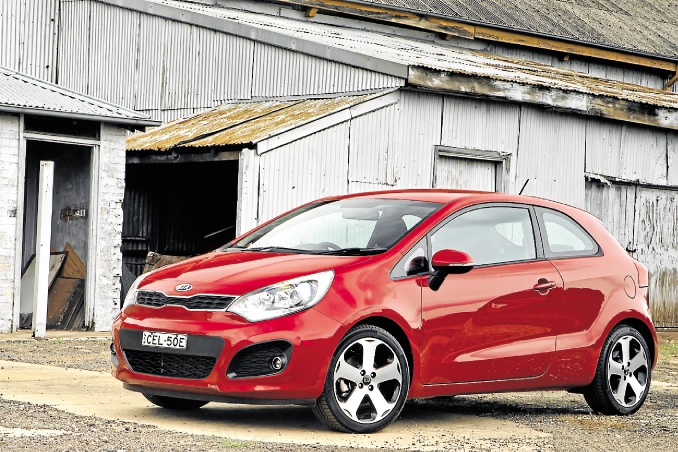Named after a South American city, designed in Europe and the US, built in South Korea and fine tuned in Australia.
Is it any wonder the importers say the fourth-generation Kia Rio will appeal to many buyers Down Under?
The Kia Rio landed here in late 2011 and was joined by three-door hatch and four-door sedan variants midway through 2012.
The base model three-door S we have just reviewed comes with a 1.4-litre petrol engine.
On average the Rio manual used about seven to eight litres of fuel per hundred kilometres on suburban runs. This drops to five to six litres if you treat it carefully on open road trips.
Kia Australia engineers had a major input into the new Rio’s ride and handling, shaking down each model in exacting conditions over 2000 kilometres on the same stretch of road in and around the Hunter Valley. They also put them up against rivals from the light-vehicle segment.
Handling is sharp and well-controlled for a car in this class. However, the downside is that the ride may be firmer than some like on roughish surfaces. Try the car on that sort of road if comfort takes precedence over handling.
In design terms, the new Kia Rio leads from the front with its so-called ‘Schreyer’ chromed radiator grille, a nod to Peter Schreyer, the chief design officer at Kia.
Out the back, the hatch is distinguished by a roof-mounted spoiler and stylish lines. The result is a body identical to the five-door, offering the same dimensions and the same striking looks.
‘Tidy’ is the best way to describe the cabin interior, with minimal but mostly helpful information set out in an easy-to-read manner. Three large dials directly in front of the driver present speed, revs and fuel status.
Rear legroom is on the meagre side and hard plastic surrounds place the Rio well and truly in the cheap car segment. Which is fair enough – it is a cheap car. The Rio 1.4 S manual three-door hatch comes on to the market at $15,290, plus on-road costs, and is covered by Kia’s five-year, unlimited kilometre factory warranty.







